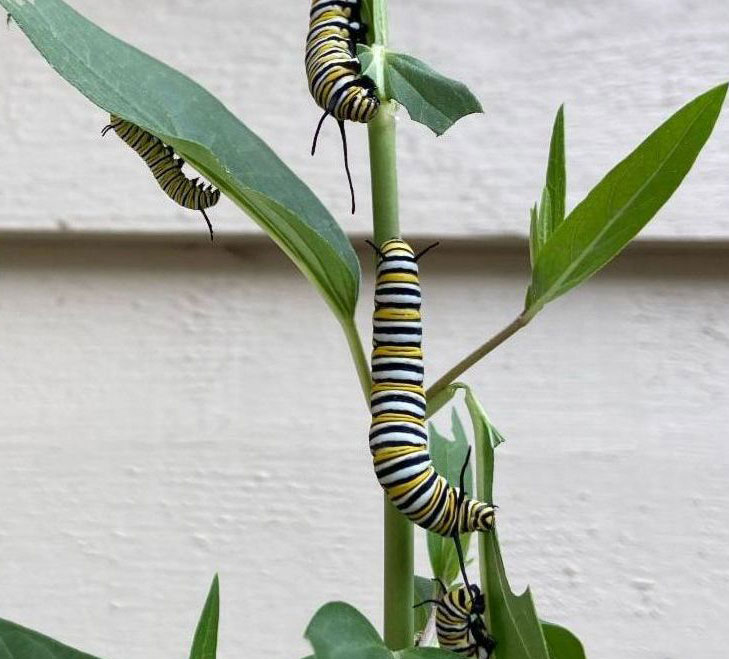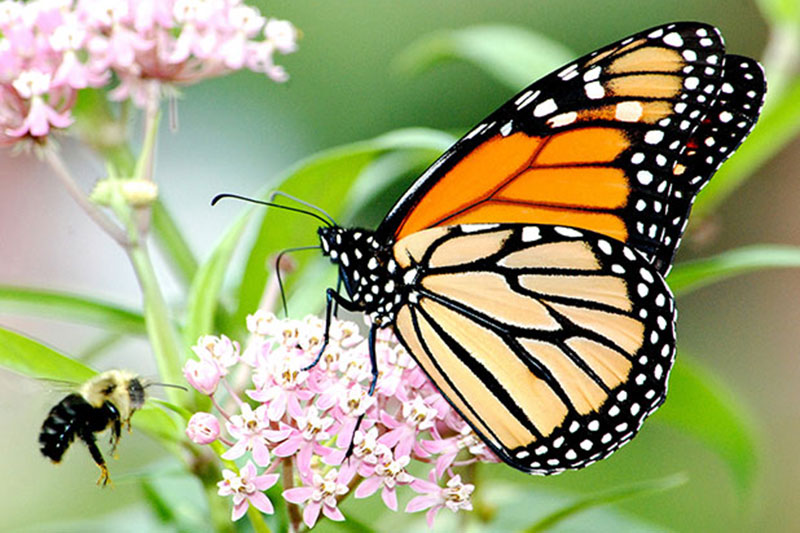Admittedly a novice at native landscaping and restoration ecology, I am fortunate to have experts to rely on (like Root-Pike WIN’s Nan Calvert) to become more well-versed on all things native in our basin.
That said, I have made my own commitment to convert more of my “traditional” landscaping with native trees, shrubs and flowers.
This past summer I planted swamp milkweed, a Monarch butterfly favorite, and my family watched the progress over the summer months.
We were blown away.
Each of the plants had multiple caterpillars and eventually chrysalides. Not only was it fun to keep track of the transformation, but I was constantly reminded by my 10-year-old daughter Jaella how important these plants are to our ecosystem. Small as they are, we were responsible for more than 20 new Monarchs, and that felt good.
Now the bad news. According to a recent report by the U.S. Fish and Wildlife Service, the Monarch is warranted to be designated as a “Federally Endangered Species.”
Can you believe it? The once common Monarch is now on life support.
It gets worse. When things are dire for one species, it is foreshadowing for other species up and down the food chain – including our own food chain.

Pollinators are an essential element in our food production process. Serious impacts to our global food production may be in store if we don’t reverse the trend.
There is good news. Locally, we can help the Monarch and other threatened native pollinators like the endangered rusty patched bumble bee.
Our Pollinator Patch Program seeks to optimize landscapes for pollinators by replacing monocultures, like unused turf grass, with diverse native vegetation.
Native vegetation provides food sources and resilient habitats to species at risk, improves water quality, reduces flooding and reduces landscaping costs. Our team of experts help corporations, churches, schools and municipalities implement the native practices that aid in the regeneration of these pollinators.
The Monarch decline has many culprits.
The loss of overwintering habitat in Mexico, Texas and California is the hemispheric issue. In the Root-Pike basin, the use of pesticides and the decrease in natural spaces, where milkweed thrives, are known impacts to the Monarch.
While it’s hard to change what happens in Mexico, at home you can make a difference.

While we have advanced many projects that will restore hundreds of low-quality acres with high-quality native spaces in the next few years, that work is not enough. We are asking you to support this initiative in three ways:
- Suggest an organization that might benefit from our program: Forward this article or make an introduction.
- Plan for and plant more native plant species at your home and business: Click here for guidance at Root-Pike WIN.
- Help restore more pollinator habitats: Donate now at Root-Pike WIN’s GoFundMe page.
We know that small patches can lead to big changes. Together, we can create more resilient and sustainable processes that are vital to threatened pollinators and other native species – as well as our own.












